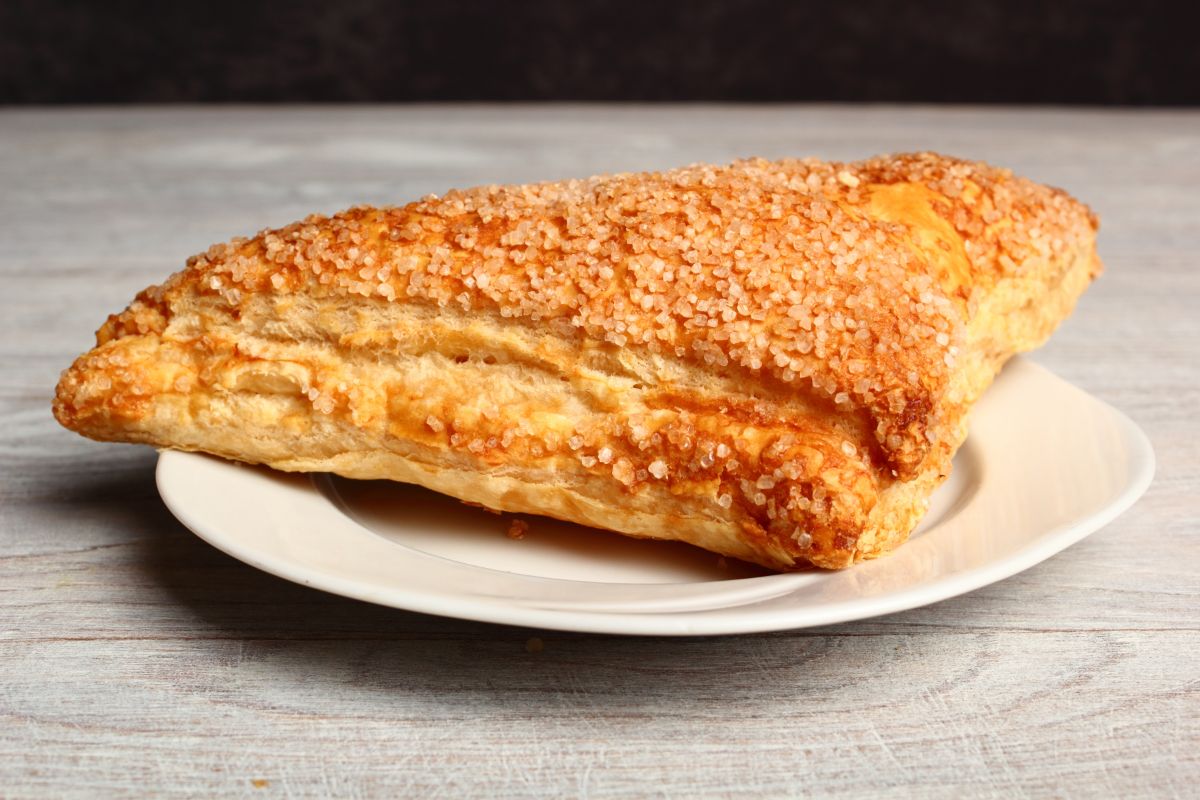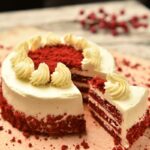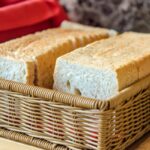Puff pastry is incredibly useful for baking and while it can be made yourself, it can also be purchased at your local store.
If you choose to randomly bake something, then the chances are that your puff pastry will be frozen.

You should always make sure that your puff pastry is cold but has been thawed prior to using it for baking purposes.
There are three different ways that you can quickly thaw puff pastry and I have outlined these methods below.
Using A Microwave
- Take one pastry sheet and remove it from its packaging. Then, use a microwave in order to thaw your pastry sheets as quickly as possible. If your puff pastry can be folded easily then it does not require thawing.
Your sheet of pastry should be cold to touch when you are using it to bake. If the sheet is warmer than this, then you should return it to the fridge to allow it time to chill after microwaving.
You should also avoid manipulating pastry sheets that have been full thawed prior to using them as this could cause them to tear.
- Wrap your pastry sheet using a clean paper towel, lay your pastry sheet onto the bowl before folding it over. If your paper towel is not large enough, use a second towel in order to successfully hold your pastry sheet in place.
- Thaw your pastry sheet in the microwave on a high heat for thirty seconds. Then, place the pastry sheet and towels onto a microwavable plate.
Turn on the microwave for fifteen seconds, flip the paper towels and the pastry sheet, and warm for a further fifteen seconds.
- If your sheet of pastry does not fold readily after heating, then place it back into the microwave and heat on a high setting for a further five seconds. Continue to microwave for five seconds on each side until the sheets are able to be folded easily.
Using A Fridge
- Remove your pastry sheets from their packaging and place them in a fridge. While the fridge may be the slowest thawing method outlined in this article, using a refrigerator does ensure that your pastry thaws thoroughly.
It also ensures that your pastry sheets remain cool so that they can be used whenever they are removed from the fridge.
You should ascertain whether the pastry sheets require thawing prior to folding them. If the pastry sheets can be folded easily, then they do not need to be thawed.
Puff pastry should always be cold whenever it is being used. If your pastry still feels warm to touch, then you should place it back into the fridge in order to cool it properly.
- Separate your pastry sheets and place them onto a plate. You should try to ensure that you place each sheet of pastry onto its own plate.
Do not attempt to place more than two sheets on top in order to save space. Doing this will ultimately stop your pastry from thawing properly while it is in the fridge.
- Cover each plate using plastic wrap. Once you have fully opened your roll of plastic, stretch it properly over each plate.
Then, you can fold any excess pastry underneath the plate on each side. The bottom of your plate will hold the wrap firmly in place while your pastry is thawing in the fridge.
- Place your pastry sheets into the fridge for four hours. If you still feel as though they are frozen, you should leave them to thaw for a while longer until they are fully ready to be used. Keeping them in the fridge for another hour should do the trick.
Using A Countertop
- Remove your puff pastry sheets from their packaging. Thawing your sheets at room temperature will take minimal effort, however, it can be an incredibly slow process.
As mentioned, you should assess your pastry sheets properly to ascertain whether they need to be thawed or not. If they are cold to touch and can be easily folded, then they are ready to be used.
If they are still warm, place them into the fridge and allow them to chill for longer.
- Then, place each sheet onto its own plate and place it onto your countertop. You should try to avoid stacking the pastry sheets on top of one another as this will mean that they do not thaw properly or evenly.
- Allow your sheets to thaw for forty minutes. After this time has passed, your sheets should be thawed correctly.
If they have not, allow them to thaw for a further ten minutes prior to testing them once again to ascertain whether they have thawed or not.
If the sheets have thawed but feel warm to touch, then place them into a fridge for ten minutes in order to cool them.
Key Tips
- Puff pastry works best when it is cold. While you are thawing your pastry, you should also place any baking tools into your fridge to ensure that they are cold also. This will enhance your ability to sculpt your pastry when you are baking.
- Whenever your sheets have thawed, you should work with them quickly as you do not want them to warm up to room temperature or be heated by your hands.
- It is worth noting that after baking, puff pastry that is heated in the microwave will lose its flaky texture. This occurs regardless of whether the pastry sheets were homemade or bought in a store. You should try to keep your puff pastry as flaky as possible as this type of pastry is perfect for Wellington, turnovers, and strudels!
- Sprinkle some crushed corn flakes or dried bread crumbs on to the bottom crust prior to filling your pastry and baking it. This will ensure that the filling contained within the pastry does not turn the crust soggy.
- Partially baking your pastry prior to adding any moist contents will ensure that the surface is sealed and your pastry case is crisp. This prevents your pastry from turning soggy whenever it is filled and baked in the oven.
- You should always ensure that you are preheating your oven for a minimum of 20 minutes prior to baking your pastry. This is because puff pastry requires an even heat in order to rise and puff up accordingly. You should place your pastries approximately 1 inch apart. If you require a flaky and crispy form of pastry that isn’t as puffy, then you should prick your pastry with a fork prior to baking, as this will allow any steam to escape during the baking process.
- Pastry should always be chilled in a refrigerator prior to being made. This ensures that it can relax which helps to prevent any shrinkage during the baking process. In addition to this, you should trim any extra pastry from your tart case prior to blind baking as this will prevent it from hanging over the tin.
- Using an egg wash on your pastry will help to seal the contents and connect your puff pastry pieces together. To do this, take one egg plus a single teaspoon of water and brush between the pastry layers prior to pinching it together. When you are using an egg wash, you should try to ensure that it does not run down the sides of the pastry as this can cause the edges to join together and prevent your pastry from rising properly.
- You can also line your tart tin using baking parchment paper and use fillings like dried pulses or ceramic baking beans. Then, bake your pastry for fifteen minutes until it becomes firm, before removing your beans and cooking for a further five minutes until the pastry has become golden brown.
Conclusion
To conclude, you can easily and quickly thaw puff pastry by using the three different methods that I have outlined in this article.
While thawing your pastry sheets at room temperature is the most common method, it is also the slowest method of thawing puff pastry.
You should also only work with pastry sheets that are cold to touch.
If your pastry sheets have warmed to room temperature, then you should place them inside your fridge to chill them correctly. Doing this will avoid any mishaps during the baking process.
You should never stack pastry sheets on top of one another during the thawing process, this is because stacking sheets of puff pastry together will result in uneven thawing, slowing down your baking process by proxy.
Instead, place each sheet onto its own plate prior to placing them onto your countertop, into a microwave, or into your fridge.
Puff pastry is delightful to make and to taste. Thus, it is important to ensure that you have thawed your pastry correctly so that you can work with it efficiently.
I hope that you have found this article to be insightful and informative. Thank you for reading.
- How To Reheat A Cheesesteak - November 5, 2023
- What Are Three Must Have Kitchen Knives? - September 22, 2023
- How To Protect Edges Of Pie Crust - June 15, 2023








